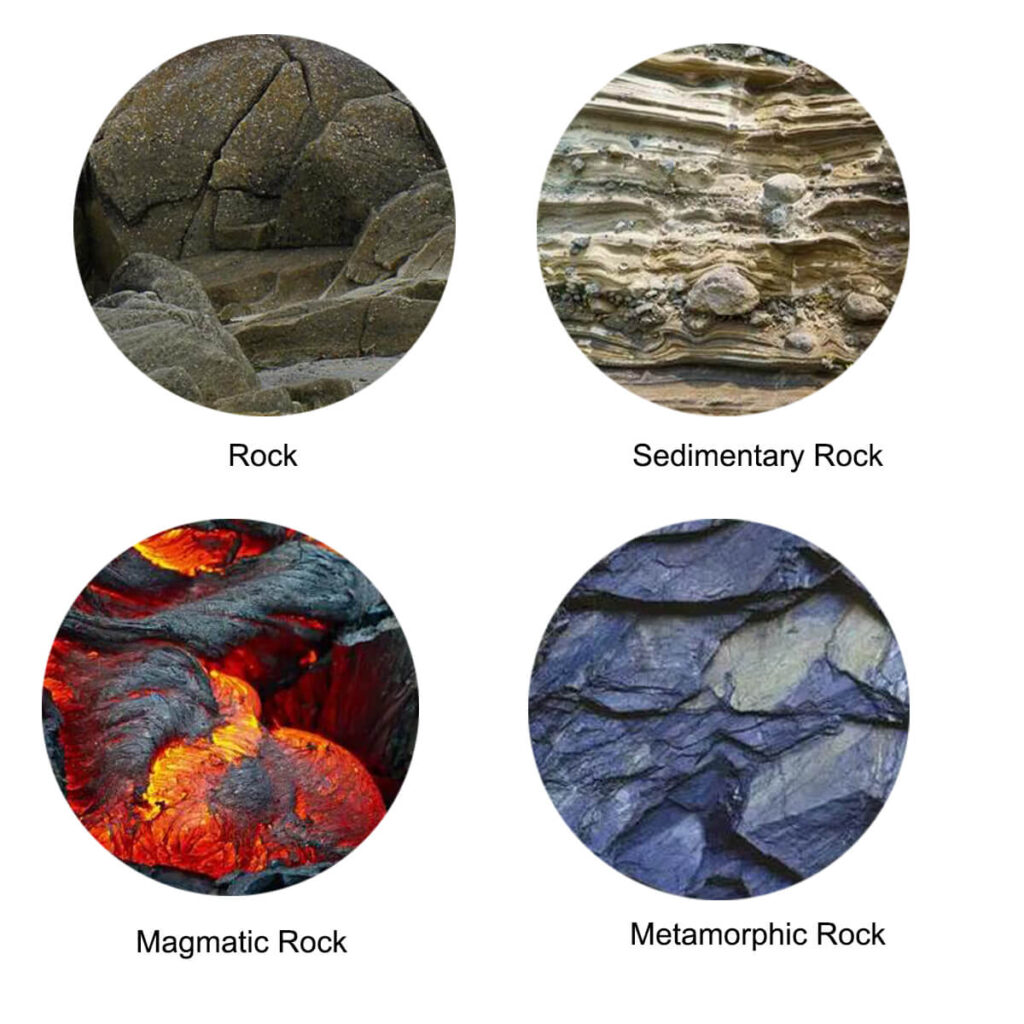As a newcomer to the beneficiation industry, there will be a lot of knowledge to learn. Beneficiation is a significant science, including mineral processing methods, technologies, equipment, and beneficiation solutions. In this process, we will encounter common questions and answers about beneficiation. As a professional mining equipment manufacturer and mineral ores solution supplier, JXSC Mineral summarizes some common questions and answers for your reference. Today we will introduce 11 FAQs about rock and minerals.
Q 1: What are diagenesis and mineralization?
A: Diagenesis refers to the consolidation of loose sediments to form sedimentary rocks and is a general term for various geological processes that include rocks. Such as magmatic diagenesis, metamorphic diagenesis, granitization, stigmatization, etc. The so-called diagenesis generally refers to the physical and chemical processes that occur after sediment deposition until rock consolidation and before metamorphism in a deep burial environment.
Mineralization refers to the various geological processes that enrich the scattered useful substances (chemical elements, minerals, compounds) to form ore deposits during the evolution of the Earth.
Q 2: What is rock?
A: Rocks are solid minerals or mixtures of minerals. Rocks have three states: solid, gaseous, and liquid.
Q 3: What is a sedimentary rock?
A: The consolidation of loose deposits deposited in layers forms sedimentary rock. It is also called sedimentary rock and is one of the three primary rocks that make up the Earth’s lithosphere (the other two are magmatic rocks and metamorphic rocks).
Q 4: What is magmatic rock?
A: Magmatic rocks, also known as igneous rocks, are rocks formed by the condensation of magma, accounting for about 65% of the crustal volume.
Q 5: What is a metamorphic rock?
A: Metamorphic rock refers to a new type of rock transformed by the internal forces of the Earth (changes in temperature, pressure, stress, chemical composition, etc.).
Q 6: What are ores, useful minerals, and gangue minerals?
A: Rocks make of Earth’s crust, and minerals make of rocks. Minerals are natural compounds or elements with fixed chemical composition and physical properties in the Earth’s crust.Minerals that human beings can use are called useful minerals. Mineral aggregates containing useful minerals, such as the number of useful components, can be recycled and used under modern technical and economic conditions. The mineral aggregates are called ore.
Ore often contains various minerals associated with the “ore minerals” we currently use, and the presently unavailable minerals are called gangue minerals.
Q 7: What are the properties of the ore?
A: The properties of ore mainly include the chemical composition, mineral composition, structure and structure of the ore, the occurrence state of useful and harmful elements, and the physical and chemical properties of the ore.
Q 8: What is the structure and structure of ore?
A: The structure of ore refers to the shape, size, and spatial distribution of various mineral aggregates in the ore. Common ore structures include granular structure, metasomatic structure, solid solution separation structure, dynamic pressure structure, etc.
Ore structure refers to mineral particles’ shape, size, and interrelationship. Such as certain iron ore, magnetite, and gangue strips are strip-like structures; magnetite is granular, and the particle size is 0.2-0.04mm. ) the common ore structures are disseminated structure, massive structure, strip structure, vein structure, breccia structure, and colloidal structure.
The structure and structure of the ore determine the difficulty of ore sorting.
Q 9: What are ore deposits, ore bodies, and surrounding rocks?
A: A ore deposit refers to a geological body formed by geological processes inside and on the surface of the earth’s crust. The quality and quantity of the mineral resources it contains meet the industrial requirements and can be exploited and utilized under certain technical conditions.
Ore body refers to a geological body that contains a sufficient amount of ores and has mining value. Wall rock refers to the rock surrounding the ore body.
Q 10: What are minerals?
A: Minerals refer to natural elements or compounds formed by geological processes with relatively fixed chemical composition. Those in the solid state also have a definite internal structure; they are stable within a certain range of physical and chemical conditions and are the basic components of rocks and ores. Pure substances do not exist, so pure substances here refer to substances whose chemical composition is relatively single.
Q 11: How are minerals classified?
A: There are many types of ores. In addition to metallic ores and non-metallic stones, Jinguo ores are also divided into natural ores, sulfide ores, oxide ores, and mixed ores according to the chemical state of the metal. Useful minerals are natural elements called natural ores, such as gold, silver, platinum, elemental sulfur, etc. The characteristic of sulfide ores is that the useful minerals are phosphatides, such as Huang Gao ore (CLuFeS2), galena (PbS), etc. The useful minerals in oxide ores are oxides, such as magnetite (Fe8304), hematite (Fe2O3), etc. The mixed ore contains both sulfide minerals and oxidized minerals.
When the ore contains only one useful metal, it is called monometallic ore; when it has more than two metals, it is called polymetallic ore.
Due to different ore grades and different industrial processing methods, it is customary to divide the ore into rich and lean ore according to the difference in the content of valuable components in the ore.
If you would like to know more information, please contact us.

